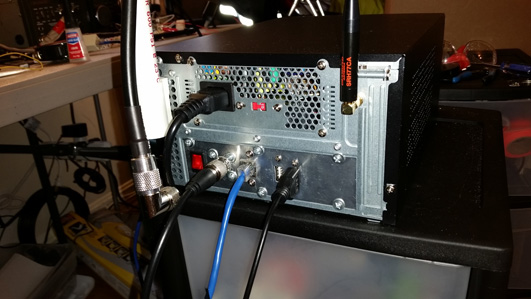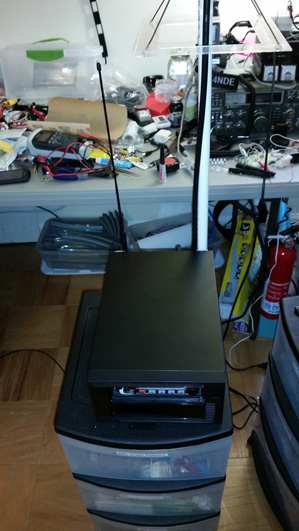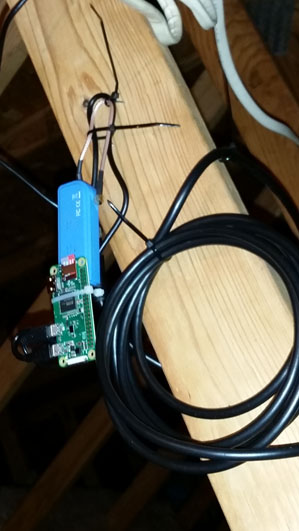Receive-only APRS iGate
This project uses a $10-$20 USB TV-Tuner (RTL2832U "RTL-SDR") as a general-purpose receiver connected to a Linux computer to create an APRS iGate and upload packets to aprs.fi.
System requirements:
- Reliable internet connection
- RTL-SDR compatable USB TV tuner
- Debian based Linux computer (e.g. Ubuntu for desktop/laptop or Raspbian for Raspberry Pi) -- anything that uses "apt-get" to install software should be compatible with these scripts. If you use other distros, it is probably possible to tweak the commands but I don't have them ready-made.
Setup scripts: https://github.com/mmiller7/aprs-igate-rtl-sdr-setup
I personally recommend this calibrated, temperature-compensated-crystal RTL SDR because it doesn't drift, but you can find similar ones for under $10 that aren't temp-compensated and will likely do fine after you let it "warm up" for half an hour and run the offset calibration script (included in my setup scripts)
NooElec TCXO SDR: http://www.amazon.com/dp/B00VZ1AWQA
Software
There isn't a heck of a lot to say about the software...it has relatively little configuration and my setup script guides you through basically all of it. If the debug script shows you are receiving APRS beacons then once it's configured with your location, callsign, etc, you start the service and let it go.
My Hardware
Here are a few pictures of my installation, if you read thru my page about the portable Echolink node, you will recognize the minor change of one more antenna.

Above, you can see the SDR (black) connected to the USB hub and a gold color coax running to the back panel for the antenna connection. The only hardware modifications done to add this was plugging in a small USB hub, the USB tuner, and screwing a SMA-to-MCX adapter to the back panel in an existing hole to bring the antenna connector outside the case. Since this photo was taken I upgraded the RTL-SDR dongle to a newer RTL2832U/R820T2 (v2) which is supposed to have a better receiver. The only outward difference is it's blue (you may see that in some other photos) instead of black.
In the next pictures, you can see the external view - the second antenna added for APRS reception.


Update Aug 2017
I now have an additional iGate running with this configuration in an attic. It runs on a Raspberry Pi Zero W and connects back to the internet over WiFi. For installation a few zipties were stapled to the framing and then the zipties were gently secured around the cables until it felt stable then. It's powered by a cellphone chahrger plugged into an available outlet (just out of the top of picture) While it isn't "portable" in this specific installation the setup and software is identical and hardware is almost identical (different board from same family of microcomputers). For an antenna (not shown) I built a roll-up J-pole fashoned from some spare ladder-line in my parts bin.

Other related notes
With different software, this can also be used to track airplanes flying over you in real-time by decoding the ADS-B signals! Not that useful for Ham Radio but really neat none the less. This is similar to what you may have seen on sites like FlightAware except it's real-time (not delayed X minutes).
From the RTL-SDR site: http://www.rtl-sdr.com/adsb-aircraft-radar-with-rtl-sdr/
Another guide, and how to contribute to FlightAware: https://flightaware.com/adsb/piaware/build